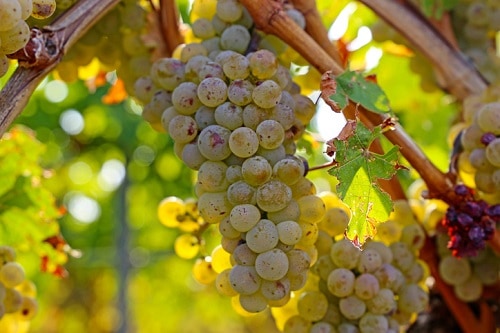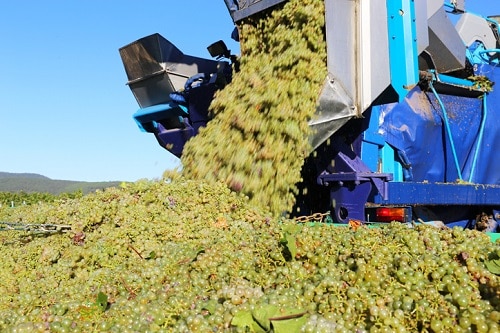Vidal Blanc Grape Variety & Wine Profile
Last Updated on October 7, 2023.
Vidal Blanc is an interesting and complex hybrid grape variety that has found success in the colder regions across North America. Originally created by French grape breeder, Jean Louis Vidal, in the 1930s as a variety to use in Cognac production in the Charente-Maritime region of western France, Vidal Blanc is no longer authorized to be used in the production of wine in that country.
Instead, it was brought to the U.S. in the mid-20th century and has been grown across regions in the U.S. and Canada such as in the states of Virginia, Michigan, North Carolina, Pennsylvania, Ohio, Rhode Island, and New York, as well as in the provinces of Ontario, British Columbia, and Nova Scotia to be used primarily in the production of quality dessert wines. However, it can be produced in a variety of styles ranging from dry to sweet.
This grape is a hardy variety that can withstand much colder temperatures than other more traditional varieties of wine grapes. It is a cross between the Vitis vinifera grape, Ugni Blanc (St. Emilion or Trebbiano Toscano), and the Seibel grape hybrid, Rayon d’Or. In the vineyard, it has tough skins and is susceptible to conditions such as coulure, powdery mildew, and botrytis.
The Tasting Notes of Vidal Blanc
Vidal Blanc grapes have high sugars and moderate to high acidity, which makes it an ideal candidate for late-harvest dessert wines and ice wine, which is produced primarily in the more northern Canadian regions. It is usually harvested later than other varieties as winemakers may choose to leave it on the vine to increase sugars and decrease the acidity of the grape.
The flavors of Vidal Blanc wines include tropical fruits such as grapefruit and pineapple, as well as honeysuckle and pear, candied fruit and citrus flavors.
Food Pairing Vidal Blanc
Because Vidal Blanc can be produced into a wide range of styles of wines, such as dry single varietal wines either aged in wood or not, seen more often in Virginia and New York, to sweeter dessert wines, it can be paired with a variety of foods.
Dry, crisp styles are a match for seafood pairings such as scallops and salmon or tuna, while sweeter styles may pair well with fruit or various types of fruit-based dessert, or even salty cheeses–think ice wine and blue cheese.
Learn About These Other Wine Grape Varieties
Written By Jacqueline Coleman
Jacqueline Coleman is a professional wine + travel writer, wine judge, columnist, and consultant based in Miami, FL.
The Structure and Style of Vidal Blanc Wines
Body Medium
Sugar High
Acid Medium Plus
Alcohol Medium Plus
Tannins Low


